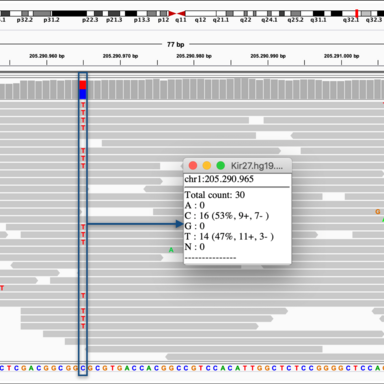Project 1.1

- PhD student: Katterinne N. Mendez
- Supervisor: Joachim Burger
- Co-Supervisors: Miguel Andrade
- Further TAC-members: Jens Blöcher
- Research Group
This research project focuses on the study of human adaptation to novel and selective environments using ancient epigenomes from genetically diverse human groups. Particularly, by the inference of genome-wide DNA methylation landscapes from ancient DNA sequencing data, and its use to estimate phenotypes (e.g., gene regulation) and environmental conditions (e.g., dietary habits).
More than a decade ago it was discovered that DNA methylation can be detected in ancient genomes through the sequencing of DNA extracted from archaeological skeletons. Four years later, the first genome-wide ancient methylome was published. DNA methylation, as an epigenetic mechanism, is a regulatory process that mediates the interaction between genotype and phenotype, influenced by both genetics and environment. DNA methylation varies throughout the individual’s lifetime, across different human populations, life-styles and individuals, and can be reversible and/or heritable. Hence, the inference and analysis of DNA methylation in ancient genomes represents a method with the potential to estimate phenotypes (e.g., gene regulation) and environmental conditions (e.g., dietary habits), contributing to our understanding of human adaptation.
We’re particularly interested in the comparative analysis of the methylomes from Mesolithic hunter-gatherers and Neolithic farmers, which represents one of the most important environmental and cultural transition in recent human history. Additionally, we’re interested in the use of epigenetics clocks with inferred DNA methylation values from ancient DNA sequencing data for the estimation of age at the moment of death.
In ancient genomes, we can infer DNA methylation through the post-mortem damage (PMD) process that naturally occurs to DNA after the individual’s death. Post-mortem damage mostly consists in DNA fragmentation and cytosine deamination. The latest occurs differently for methylated- and unmethylated-cytosines: cytosine to uracil transition from unmethylated-cytosines and a cytosine to thymine transition from methylated-cytosines. Therefore, using high-throughput sequencing techniques and subsequent alignment against the human reference genome, we are able to detect these C to T/U transitions and infer methylated CpG sites.
Although, there are computational methods for the inference of DNA methylation from ancient DNA sequencing data, this is affected by PMD and sequencing depth. Currently, we’re working on assessing the accuracy and limitations of the ancient DNA methylation inference and its use for methylome reconstruction and phenotype estimation.